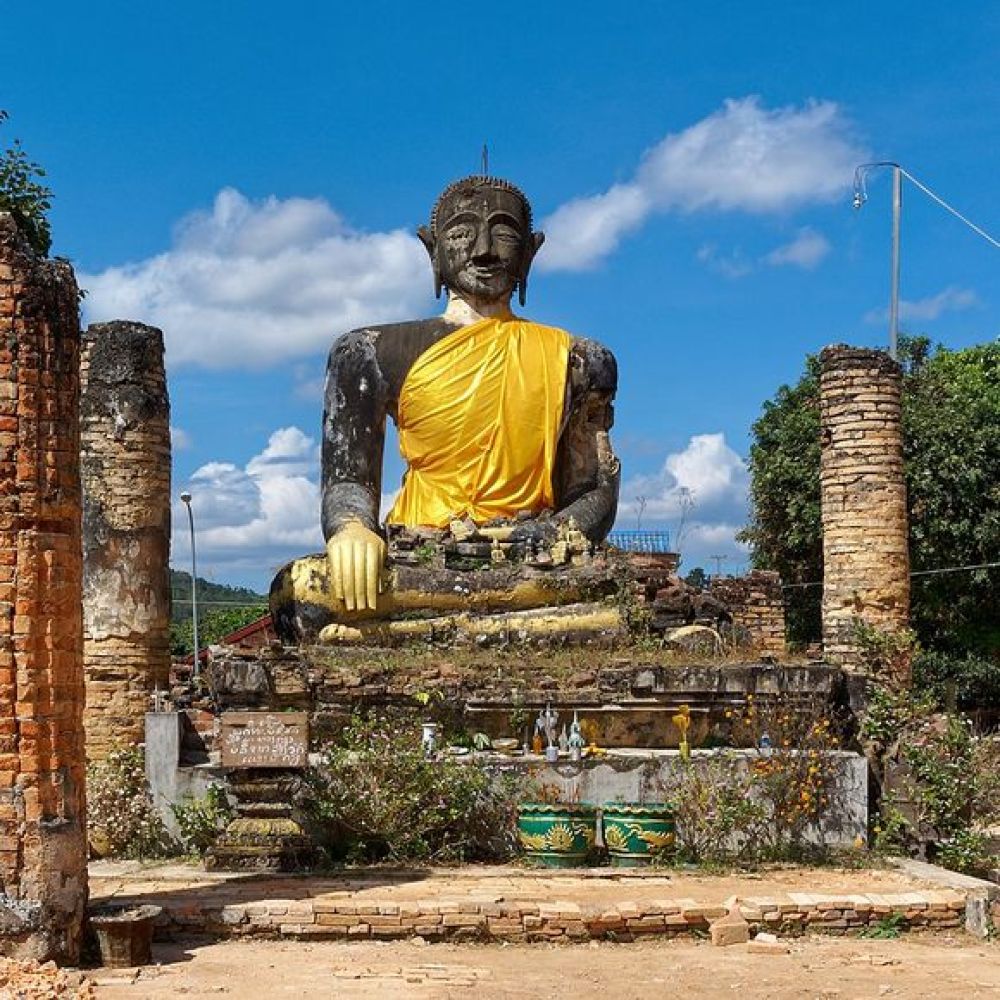

Muang Khoun, once known as the historical and royal capital of the Xieng Khouang Province, is an emblem of resilience nestled in the enchanting landscapes of Phonsavan, Laos. This region, rich in culture and history, has been an integral part of the country’s tourism landscape, attracting visitors who are keen to explore its profound historical significance and serene natural beauty.
The roots of tourism in Muang Khoun can be traced back to its era as the seat of the Phuan Kingdom. The town was known for its majestic temples and Buddha statues, which drew the attention of early travelers and scholars. Unfortunately, during the Secret War in the 1960s and 1970s, much of the town was destroyed, including several ancient shrines and artifacts.
Despite the devastation, the resilient spirit of Muang Khoun has ensured its survival and gradual revival as a site of historical contemplation and remembrance. The remnants of its illustrious past, such as Wat Piawat, the ruins of the old stupa, and the giant Buddha, have become poignant attractions that narrate the town's turbulent history.
In recent years, Phonsavan and Muang Khoun have reinvented themselves as emerging destinations for cultural and eco-tourism. The region is famously known for the Plain of Jars, which is a UNESCO World Heritage Site. The mysterious large stone jars scattered across the landscape have piqued international interest and become a centerpiece for the region’s tourism.
Besides historical excursions, Phonsavan offers opportunities for outdoor adventures such as trekking, caving, and exploring the lush, hilly terrain on motorbikes or bicycles. The tourism sector continues to benefit from these diverse offerings, promoting sustainable travel and supporting local communities.
In keeping with global tourism trends, Phonsavan is focusing on sustainable and responsible tourism practices. There is a growing emphasis on preserving the natural environment and cultural heritage, as well as improving the livelihood of the local population.
Furthermore, experiential and community-based tourism is on the rise, with visitors seeking immersive experiences such as home-stays, local cuisine tastings, and participation in traditional festivals. Tour operators and hotels are increasingly catering to these trends, offering personalized and ecologically responsible travel packages.
The development of infrastructure, such as improved roads and the opening of the Xiang Khouang Airport, has made travel to Phonsavan more accessible, further boosting the potential for tourism growth in the region.
Despite the modern developments and increasing number of visitors, Muang Khoun and Phonsavan have retained their serene and timeless charm. For those looking to uncover the layers of Laotian history while basking in the natural grandeur of untouched landscapes, this region remains a captivating destination that continues to tell its remarkable story to the world.